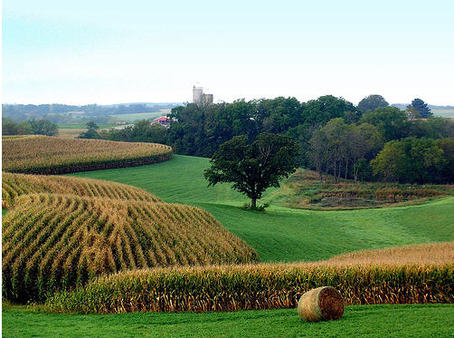I grew up in a farm family, in a close-knit Mennonite community, in southeast Iowa. I lived with my parents and three brothers, although my oldest brother was killed in a silo accident when I was just one year old. It was a typical mid-western family farm. We raised corn, oats and hay, and livestock – dairy cows, sheep, hogs and beef cattle. We worked hard on the farm. Mother tells  me we had the reputation of being one of the hardest working families in the community. My brothers and I (and dad, of course) would chore every morning and evening, and work all day Saturday. Summers were devoted to more of the same, but usually we took a vacation in August, sometimes an extended family vacation “out west” or even to Alaska.
me we had the reputation of being one of the hardest working families in the community. My brothers and I (and dad, of course) would chore every morning and evening, and work all day Saturday. Summers were devoted to more of the same, but usually we took a vacation in August, sometimes an extended family vacation “out west” or even to Alaska.
My cultural legacy is Mennonite first, and Swiss-German second. Ancestors from both my father and mother immigrated to the U.S. from Switzerland and Germany around 1830. Gingerich is a longstanding Mennonite name, along with Eash, Yoder and Swartzendruber, all important lines in my family geneology. Mennonites trace their origin to the Protestant Reformation in Europe in the early sixteenth century. Distinguishing beliefs of the Mennonites, or anabaptists as they were originally called, include: (1) the separation of church and state, (2) adult baptism, and (3) pacifism (non-participation in war). The Amish are a more conservative sect of Mennonites, believing that Mennonites had become too worldly.
My experiences growing up in a Mennonite community had a strong impact on me personally and professionally. Principles such as the separation of church and state, peaceful resolution of disputes, and living out one’s beliefs in daily life remain important to me. Once I attended graduate school and began my social work career I was no longer able to participate in a Mennonite community. Few urban areas had established communities at the time.
Web resources related to Mennonites can be found at:
- Mennonite Church USA – website of the Mennonite Church USA denomination
- MennoLink – an independent inter-Mennonite website; information on Mennonite related books
- Mennonite Connections on the WWW – this interesting site is loaded with information and is hosted by my cousin, Brad Lehman
- Mennonite Central Committee – this is the inter-denominational relief and development arm of the Mennonite church. Coordinates the MCC Relief Sales held in many states
- Brethren/Mennonite Council for Gay/Lesbian Concerns – a group that is working for the inclusion of gays and lesbians in the Mennonite Church
- Amish and Mennonites – this site from Kalona, Iowa, near where I grew up, describes the differences and similarities between Amish and Mennonites